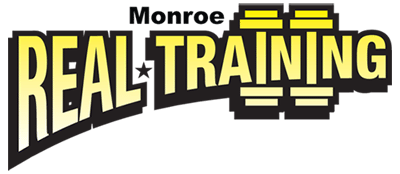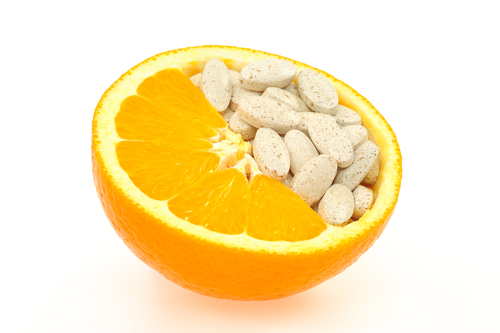Are you getting enough vitamin C?
Above image by Alena Brozova/Shutterstock.com
What can vitamin C do for the body?
I discovered the importance of vitamin C (also known as “Ascorbic Acid,”) after I began supplementing with Iodine, and this came from my struggle to get enough from my diet, despite trying to eat several portions of fruit and vegetables every day. Vitamin C is known to be an essential mineral (cannot be produced by the body), that strengthens our natural defenses by boosting the immune system, and supports heart health and brain function. It also helps the body produce collagen, and due to it being a strong antioxidant, protects the body from the harmful molecules (free radicals) that occur during every-day natural processes in the body.
The amount of vitamin C in foods.
According to the Natural Health Kushi Institute, our vitamin C levels have dropped by up to 30% in our foods. It is also lost during cooking or storage too, sometimes up to 55%, (according to Donald Davis at the University of Texas). The recommended daily allowance (RDA) of vitamin C is 90mg for a man, and 75mg for a woman, however I was not convinced this would be enough given the levels of soil depletion, loss during cooking, and pollution. This led me to begin searching for ways to boost my levels of vitamin C in my diet. I felt, my requirements were perhaps even higher due to my increased efforts to strength-train several times a week.. It is said that the body needs more antioxidants to deal with the stress it’s placed under from stringent and challenging exercise, and I believed this to be true.
Natural vitamin C versus synthetic vitamin C.
One of the most popular ways of supplementing with vitamin C is through a synthetic powder or tablet of Ascorbic Acid, but I wanted a more natural method. However, all of the natural formulas of vitamin C that I discovered so far were very expensive and did not contain significant levels at all. For example, a cheaper synthetic tablet could have up to 1000mg of vitamin C per tablet, whilst the natural powders had about 120mg. With the added cost factored in, this wasn’t feasible so I continued supplementing with synthetic vitamin C. However, I was still on the hunt for a natural form that had higher levels of vitamin C.
Unexpectedly I had also noticed an energy boost after supplementing with synthetic vitamin C. Also a friend who would consistently get the flu every single winter for at least 2 weeks, reported a rapid recovery of just 3 days after supplementing with 500mg of vitamin C a day. I felt that a natural form would provide even more benefits because in nature, minerals never ‘walked alone’ and were often paired with other minerals, enzymes, and nutrients.
After some time, I finally discovered a natural form of vitamin C that contained sufficiently high levels called Camu Camu which was produced from cherries in to a dried powder – Apparently it was often found growing in flooded areas of the Amazon rain forest in Peru, Brazil, Colombia, and Venezuela. It contained 30 – 50 times more vitamin C than an Orange fruit and was a reasonable price. Camu Camu also contains essential amino acids, and more iron, niacin, riboflavin and phosphorus than an Orange.
Supplementing with natural and synthetic vitamin C
Although the Pioneer in Vitamin C, Linus Carl Pauling was adamant that Ascorbic Acid alone was sufficient, I always preferred to have as many elements as possible. After all, food is always whole in nature, rarely, if ever isolated. This is the reason I chose to continue supplementing with synthetic vitamin C, whilst adding a natural source such as Camu Camu powder to my smoothies or other meals several times a day. After a few weeks of doing this, I felt a significant boost in my health, had more energy during workouts, and if I noticed any symptoms of cold or flu, they rarely lasted for more than a couple of days.
I believe it is important to provide the body with the best fuel possible not only for working out, but for our overall sense of wellbeing. Consuming both synthetic and natural forms of Vitamin C, combined with fruits and vegetables has provided me with everything I need to continue reaching my true potential. Are you getting enough vitamin C to reach yours?
All information in this article is for educational purposes only and has not been evaluated by the Food and Drug Administration. It is not intended to diagnose, treat, cure or prevent any disease.
References:
Encompass Health Clinic . (). Camu Camu – The Superfruit with 600 Times More Vitamin C Than Oranges!. Available: https://encompasshealthclinic.com.au/camu-camu-the-superfruit-with-600-times-more-vitamin-c-than-oranges/. Last accessed 13th December 2018.
Roddy, Scheer et al. (). Dirt Poor: Have Fruits and Vegetables Become Less Nutritious?. Available: https://www.scientificamerican.com/article/soil-depletion-and-nutrition-loss/. Last accessed 12th December 2018.
Sunsafe Rx. (02 December). Nutrient Levels In Produce Are Decreasing—And What To Do About It. Available: https://www.sunsaferx.com/health-and-wellness/nutrient-levels-produce-decreasing-what-to-do-about-it/. Last accessed 13th December 2018.
Parker-Pope, Tara. (18th October 2013). Ask Well: Does Boiling or Baking Vegetables Destroy Their Vitamins?. Available: https://well.blogs.nytimes.com/2013/10/18/ask-well-does-boiling-or-baking-vegetables-destroy-their-vitamins/. Last accessed 13th December 2018.
- Could improving my Immune health also combat COVID-19? - August 2, 2020
- The Power of being Present. - May 10, 2020
- Magnesium – The magnificent mineral. - March 1, 2020


